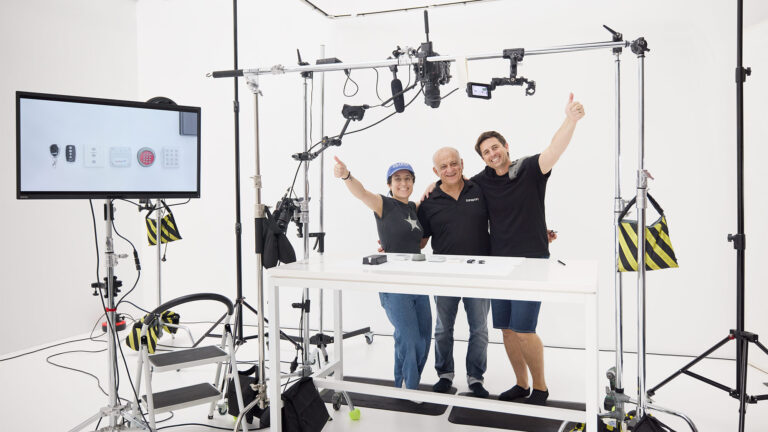Why Photography Ownership Matters for Leading Brands
When you invest in commercial photography, you’re not just paying for pixels. You’re backing expertise, vision, and the human effort that brings images to life.
If you believe great imagery has power, then valuing the people who create it is the only logical step. Respect follows naturally when you plan carefully, collaborate openly, compensate fairly, and build long-term partnerships.
The brands that lead don’t just consume creative work, they invest in it. Because when you value people, you’re not just taking from them. You’re ensuring they’ll still be there tomorrow to create for you.
In a world where nearly everyone has a camera in their pocket, it’s easy to demand urgent, low-cost, high-impact visuals. But what does that say about how you value the people behind them? And what does it say about how you value your own brand?
Photography Ownership: A Reflection of What You Value
Business is built on relationships, moving through get to know, like, and trust. Yet when it comes to creative professionals, that trust is often overlooked.
Photography ownership isn’t about restrictions or control. It’s about valuing the people behind the work and setting clear use boundaries.
Elevating Your Brand Through Strategic Visual Assets
Strong brands don’t leave their imagery to chance. They know powerful visuals shape perception, influence decisions, and drive engagement. Commercial photography isn’t just about taking pictures. It’s about creating assets that align with your purpose and direction.
Forward-thinking agencies, marketing leaders, and business owners approach imagery as a strategic investment, not a short-term fix.
Let’s explore why.

Why You Don’t Own Brand Photography, And Why That Works in Your Favour
When you engage a commercial photographer, you’re usually commissioning someone with truckloads of expertise to create tailored imagery for your business. You’re not purchasing a disposable product, you’re securing visual assets designed to work for your business.
Photographers retain copyright to protect their work and ensure its ongoing value, just as designers, architects, and consultants do.
Usage rights give you clarity, control, and flexibility. You get exactly what you need, when and where you need it, without unnecessary cost or confusion. Think of it as an agile framework for using images that helps your brand scale with purpose.
This is an area professional photographers themselves are encouraged to understand deeply: The Importance of Copyright and Usage Licences for Commercial Photographers.
Where Today’s Rules on Photography Ownership Come From
The idea of usage rights in commercial photography took shape in the mid-to-late 20th century, as advertising grew. Remember the TV series Mad Men? From the 1950s to the 1990s, businesses relied on photography for print, TV, and billboards, making clear agreements essential for defining how images could be used.
Today, with digital and social platforms expanding how far and fast images travel, ownership rules remain just as critical. They ensure you get the most out of your photography while protecting the creative integrity behind it.

How Usage Rights Define What You Can Do with Photography
- How you can use the photos (e.g. website, social media, print)
- Where you can use them (e.g. Australia only, worldwide)
- For how long (e.g. 3 years)
- Any restrictions (e.g. images cannot be resold or distributed to others)
What’s Actually Covered in Photography Usage Agreements
A standard agreement will usually spell out:
- Commissioning Client – who commissioned and paid for the work
- Type of Use – editorial, marketing, or advertising
- Media Channels – where the images can appear (web, social, print, broadcast)
- Territory – where they can be used (local, national, global)
- Timeframe – the length of use
- Exclusivity – whether the imagery is just for you or can be licensed further
- Attribution – if credit is required, especially on social platforms and with third-party use
- Photographer’s Rights – many retain the right to show the work in their own portfolio
These details protect both your business and the creator.

The Real Value of Understanding Photography Ownership
When your audience sees themselves reflected in your imagery, they feel connected. Visuals tell a story, one that builds trust and strengthens your brand identity.
By respecting ownership, you’re not just acquiring photos. You’re building an adaptable toolkit that keeps your brand relevant. This approach delivers:
- Cost-effective, scalable use – pay for what you need now, expand later.
- Consistency across campaigns – maintain control of how your brand shows up
- Long-Term Brand Equity – maintain control of how your brand shows up.strong, well-managed imagery reinforces credibility
Leading the Industry Forward
Businesses that embrace photography ownership set the standard for professionalism. They show respect, transparency, and long-term vision.
More than ever in 2025, the brands that stand out are those making informed choices. They don’t cling to outdated models. They invest in people and in practices that last.
Ownership is one thing, usage is another. If you want the practical side spelled out, we’ve put together a clear guide: Photo and Video Usage Rights: What Every Business Needs to Know.
The Future of Brand-Driven Visuals
Photography ownership isn’t just a technicality. It’s a strategic choice that shapes how your audience sees and connects with you.
The best brands don’t just use imagery. They work with it, manage it, and leverage it to drive meaningful change.

Want To Learn More?
Looking to build a stronger, more strategic brand through imagery? Love to chat.
References
Australian Copyright Council. (n.d.). Photographers & Copyright. www.copyright.org.au
Arts Law Centre of Australia. (n.d.). Copyright FAQs. www.artslaw.com.au
Image Makers Association Australia. (n.d.). Photography Licensing Guide. www.imagemakersassociation.com.au/resources





